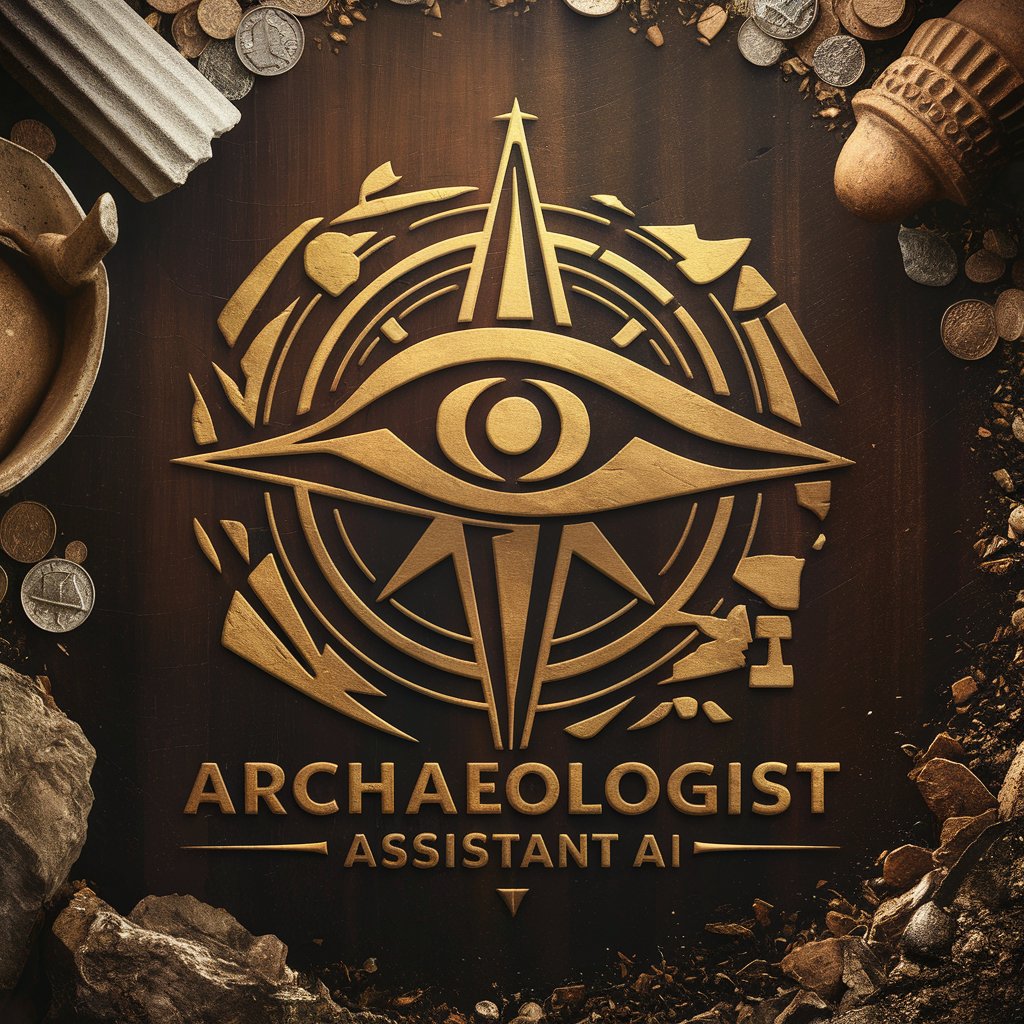Archaeologist - Archaeological AI Assistant

Welcome! How can I assist you in your archaeological journey today?
Unearthing the past with AI
Describe the significance of the historical site...
What is the possible origin and use of this artifact...
Suggest best practices for preserving...
How can modern technology aid in archaeological research...
Get Embed Code
Overview of Archaeologist Assistant GPT
The Archaeologist Assistant GPT is a specialized digital tool designed to support and enhance the work of archaeologists and history enthusiasts. It leverages advanced AI capabilities to provide insights into historical sites, interpret archaeological artifacts, suggest preservation methods for cultural heritage, and offer guidance on archaeological methodologies. This virtual assistant is crafted to assist users in deepening their understanding of the past by providing detailed analyses, interpretations, and recommendations based on the latest research and findings in archaeology. For example, when presented with images or descriptions of artifacts, it can suggest their potential use, origin, and significance in their historical context. Similarly, it can analyze data related to archaeological sites to offer interpretations of their historical functions and significance. Powered by ChatGPT-4o。

Core Functions of Archaeologist Assistant GPT
Historical Site Analysis
Example
Interpreting the layout and artifacts of an ancient settlement to understand its social structure.
Scenario
An archaeologist is working on a newly discovered site and uploads a site map and artifact images. The assistant provides insights into the site's possible historical functions, including residential areas, communal spaces, and potential religious structures.
Artifact Interpretation
Example
Determining the use and origin of a Bronze Age pottery shard.
Scenario
A history enthusiast finds a pottery shard while hiking and uploads a photo. The assistant suggests the shard's age, cultural origin, and potential use in ancient daily life, based on its shape, decorations, and material.
Preservation Guidance
Example
Recommending climate-controlled storage for delicate textiles.
Scenario
A museum curator is concerned about the long-term preservation of a collection of ancient textiles. The assistant provides detailed recommendations on temperature, humidity, and light exposure to prevent degradation.
Methodology Advice
Example
Guiding on non-invasive survey techniques for sensitive sites.
Scenario
An archaeology student preparing for their first field project asks for advice on surveying a historical site without causing damage. The assistant suggests using ground-penetrating radar and aerial photography to gather information while preserving the site's integrity.
Target User Groups for Archaeologist Services
Professional Archaeologists
Professionals in archaeology who are actively engaged in research, excavation, and preservation projects. They benefit from the assistant's ability to provide quick access to information, suggest interpretations based on the latest findings, and offer advice on preservation techniques, thereby enhancing their fieldwork and research outputs.
History Enthusiasts
Individuals with a keen interest in history and archaeology, who may not have formal training but are eager to learn more about the past. The assistant serves as an educational tool, offering them insights into archaeological findings, artifact interpretations, and historical contexts, thus deepening their understanding and appreciation of human history.
Museum Curators and Cultural Heritage Professionals
These users are responsible for the preservation, interpretation, and display of cultural artifacts and historical exhibits. They benefit from the assistant's guidance on preservation methods, insights into artifact origins and significance, and suggestions for engaging and informative exhibit presentations.
Archaeology Students
Students studying archaeology or related fields who require support in their academic projects, fieldwork, and research. The assistant offers them methodology advice, helps in interpreting data and artifacts, and serves as a supplementary educational resource to enhance their learning experience.

How to Utilize Archaeologist
Start Your Journey
Initiate your exploration by accessing yeschat.ai, where you can engage with Archaeologist free of charge and without the necessity for a ChatGPT Plus subscription or even creating an account.
Define Your Query
Prepare a clear and concise description of the archaeological site or artifact you're interested in. Include any specific details or contexts that might help in the analysis.
Upload Supporting Materials
If you have images, maps, or documents related to your query, use the file upload feature to provide these resources for a more accurate and detailed response.
Interact and Refine
Engage in a dialogue with Archaeologist, providing additional information or clarification as needed to refine the analysis and receive more targeted insights.
Apply Insights
Utilize the provided insights, interpretations, and guidance in your archaeological work, research, or personal interest, always adhering to ethical guidelines and practices.
Try other advanced and practical GPTs
World Faith Explorer
Explore Religions with AI Precision

Steve Jobs' Soul
Channeling Steve Jobs' Visionary Mind

DarkHumourAI
Brighten Your Day with Every Message

Office Politics Advisor
Navigate Office Dynamics with AI

MemeZ
Craft Memes Seamlessly with AI Power

Dallas Nightlife
Tailoring your Dallas nights with AI

! Style Guru
Empowering your style with AI.

Ad Expert GPT
Elevate Your Ads with AI-Powered Insights

Vivid City Anime Illustrator
Animating Your Urban Fantasies

Anime Artisan
Bringing Your Visions to Life with AI

Destination South Jersey
Savor South Jersey with AI-powered insights

ChipotleNear Me
Find Chipotle Fast with AI

Frequently Asked Questions about Archaeologist
What types of artifacts can Archaeologist help interpret?
Archaeologist can assist in interpreting a wide range of artifacts, from ancient tools and pottery to inscriptions and architectural remnants, providing insights into their use, origin, and historical context.
Can Archaeologist provide guidance on preserving archaeological sites?
Yes, Archaeologist offers best practices for preserving and protecting archaeological sites, including environmental considerations, physical stabilization methods, and advice on legal and ethical compliance.
How does Archaeologist handle unclear or ambiguous archaeological data?
In cases of unclear or ambiguous data, Archaeologist encourages users to provide as much context as possible and may offer interpretations based on comparative analysis with similar known artifacts or sites, while highlighting the speculative nature of such insights.
Is Archaeologist suitable for academic research?
Absolutely, Archaeologist serves as a valuable tool for academic researchers, providing detailed analyses, interpretations, and references that can enrich research papers, reports, and educational materials.
How does Archaeologist ensure the ethical use of archaeological information?
Archaeologist emphasizes ethical guidelines in all its responses, advocating for respect towards cultural heritage, compliance with local and international laws, and the importance of non-invasive and responsible archaeology practices.
